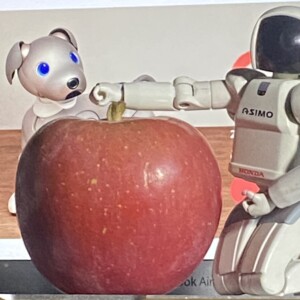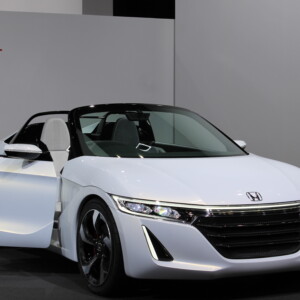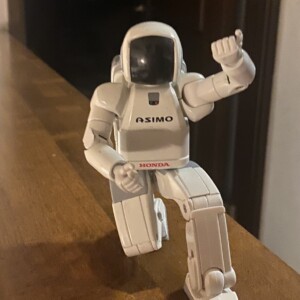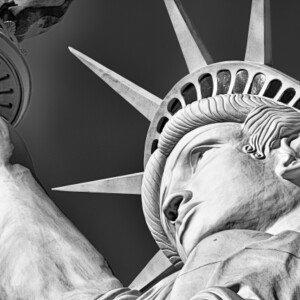
Honda disappears 24 Cars become Asimo Batteries, artificial intelligence, and sensors run
I felt the moment when automobiles merged with other industries. Exactly “will be in the melting pot”.
Predicting the near future from the construction of a battery factory with LG
Honda has decided to build an electric vehicle battery factory in the United States with LG Energy Solution, a major Korean battery company. The storage battery holds the key to the performance of the EV entrusted with the future. Securing with your own hands is a natural investment strategy.
But look back at past capital investments. Since the 1970s, Honda has invested in motorcycle and automobile assembly plants and engine plants in the United States. The engine is the heart of the car. the automaker cannot procure it from others.
On the other hand, Japanese automakers left the production of automobile parts to Japanese and American parts manufacturers, and locally procured parts made in the United States. A car consists of 30,000 to 50,000 parts and is assembled.
It is not possible to produce everything in-house. In order to strengthen our competitiveness in terms of automobile quality and cost, we have taken full advantage of the division of labor and selected and relied on strong parts manufacturers in each field. history of automobile production.
From the engine to the battery at the heart
The storage battery is also one of the parts if you think about it so far. If it is an engine car, it is equivalent to a fuel tank. Look at Tesla, the American electric car maker. Instead of concluding contracts with Panasonic and LG to procure large quantities, they press for huge investments and procure mass-produced batteries at low prices.
Batteries for EVs account for a significant percentage of the overall vehicle cost. Quality is still evolving. It is in line with the economic principle to leave it to a specialized manufacturer.
Panasonic, South Korea, and Chinese battery makers will continue to make huge investments in anticipation of global demand for EVs, including Tesla. The expansion of the EV market has just begun. If we acquire and fix a share of the battery market early, we will be able to gain an advantage in transactions and price negotiations with global EV manufacturers through mass production efficiency and technology.
Japan takes the lead and South Korea catches up, and China catches up further. This composition seems to overlap with the former LCD TV investment competition. Panasonic seemed to have taken the lead in an exclusive deal with Tesla, but there was a time when the investment burden was swayed by Tesla’s diversionary maneuvers.
This also reminded me of the predicament Panasonic experienced in investing in displays such as liquid crystal displays about 10 years ago.
Power relations with parts manufacturers also collapse
“Now, the power relationship between automakers and parts manufacturers is starting to crumble.” Automakers, including Tesla, began to turn to in-house battery development.
This is because, as battery production capacity and investment expand, battery manufacturers that supply batteries have more power over new technology development and price negotiations than automakers that procure them, and the power relationship has begun to reverse.
The biggest weakness in the spread of EVs is battery performance. In addition to the short mileage compared to gasoline vehicles, there are inadequate maintenance in terms of driving such as charging time and facilities.
It is possible that this weakness can be overcome through technological development and mass production effects. The fuel tank is a space to fill up with gasoline, but the battery is a part that can evolve. If the performance of driving and charging is dramatically improved while reducing the size and weight of batteries, the future of EVs will come into view at once.
The time has come when batteries will take the place of engines and take the leading role in automobile investment.
How will the development of automobiles change? The main parts of an electric vehicle are a power unit including a motor and a battery. Electronic circuits control them. In the near future, there is no doubt that self-driving cars will be fully equipped with sensors such as the Internet and cameras.
Artificial intelligence interprets the navigation information collected from satellites in space, cameras and sensors that probe the surroundings of the vehicle, and so on. Batteries provide the energy that enables all functions to be fully demonstrated.
New car development begins to revolve around batteries
New car development, which was centered on engines, began to revolve around batteries. The battery determines the function of the product. It’s just like developing home appliances.
The success or failure of an electric vehicle is determined by its motor performance, which is designed based on battery performance and sensor functions.
Honda plans to phase out all vehicles with engines by 2040. Leveraging our partnership with Sony to add information analysis capabilities using sensors to our world-renowned driving performance, we have the foundations to create electric vehicles that stand out from the likes of Tesla, Toyota, and Nissan.
Honda and Sony are already ahead of the rest of the world in terms of their technological foundations for the electric vehicles of the near future. That’s right, Honda is the humanoid robot Asimo and Sony is the robot dog Aibo.
All of them have realized sophisticated movements that exceed the common sense of robot development, and not only their technical capabilities but also their development experience and accumulated know-how should be reflected in the development of electric vehicles.
Asimo for Honda and Aibo for Sony”Even if a car looks the same on the outside, the inside is very different.” It makes me imagine “Transformers”, which are very popular in anime, movies and toys.
In terms of Honda, Asimo, who has completed development, transforms into a car and runs around. The head has artificial intelligence and an image sensor that can see the surroundings, the battery and power unit on the back, and the limbs react quickly, and it can run at speeds of over 100 kilometers per hour.
Of course, I will continue to drive long distances while enjoying conversations with the driver, movies and music.
Honda plans to phase out all cars with internal combustion engines by 2040. Not even 20 years left. In partnership with Sony, Honda has established a technical foundation for hardware. After that, if Honda and Sony partners with Apple to supplement the internet and information security technology, the “car” that ASIMO travels with people will not be a pipe dream.
Tesla and Toyota are also actively investing in batteries. Inevitably, we will follow the path of home appliances in automobiles. I don’t think all cars will be electric. EVs, gasoline/diesel cars, and hybrid cars keep running around. However, with the evolution of EVs, the framework of the automobile industry has been removed, and we can see the evolution of moving machines.
will be in the melting pot started
“From to ZERO” takes up the history of alliances and mergers of automobiles from the 1980s from the perspective of “my industrial history”. The first subtitle was “will be in the melting pot”. We hoped that you would imagine the automobile industry in the near future will merge with electrical machinery and melt in a boiling crucible. As expected, the industrial meltdown has begun.






